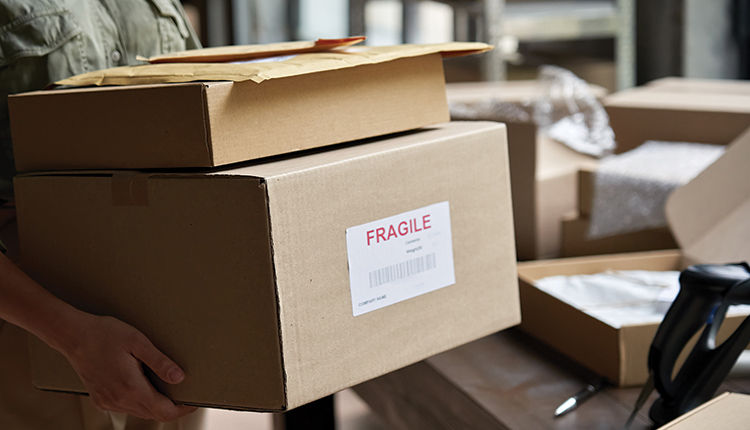Solutions for inventory shortages |
| By Kristin Ely |
|
|
Retail Maven’s Cathy Donovan Wagner shares strategies to build up inventory during ongoing shipping delays. The effects of COVID-19 are continuing to be felt by retailers more than 18 months after the global pandemic emerged. While store traffic may have returned or exceeded pre-pandemic levels, one lingering affect retailers are facing is inventory shortages. Delays in shipments are still being felt due to manufacturing being slowed or shut down in many places across the globe and its trickle-down effect. According to Cathy Donovan Wagner, of Chicago-based retail consulting firm, Retail Mavens, “The reality is entire countries were shut down during the pandemic, and right now India is really suffering. Because brands are not receiving their goods in time then us retailers aren’t either.” The situation has created a state of flux and Wagner doesn’t see the situation improving quickly. “I think it will all take a while before it all settles down because there is such a large process to this. Manufacturing takes place a whole year ahead of time so for that reason impact will be felt on the retailers end for a while.”  Cathy Donovan Wagner, Retail Mavens The good news is, there are ways to keep informed on delays, find alternatives and work on building up inventory as the retail industry waits for global supply chain issues to improve. Wagner shares some advice on how retailers can manage their inventory during the ongoing situation. How are brands addressing the situation and how can retailers adapt? Brands are looking at coming up with solutions. I believe they are going to continue to keep their options open and diversify where they are manufacturing. Before the pandemic, most brands turned to China, but I think now people are going to try to spread their manufacturing around more. Retailers have to remain agile and nimble just like the brands are. You have to continue to look for more options for what you need. You have to be able to find substitutes for things. I tell my clients who are going to tradeshows to look for replacements. What can a retailer do to stay informed? It is important to be in communication with your vendors. Ask them if they are spreading their manufacturing around to other locations and where. We are certainly seeing more manufacturing popping up in the United States. Ask vendors what they are doing and stay in contact with them. For your key vendors, schedule a date on your calendar when you are going to call vendors to check on delivery. The reality is they might not know, but if you are the squeaky wheel, you are more likely to get your shipment. I have learned time invested in that really does make a difference. Make sure you are keeping your team members in the loop on what you find out. They are your frontline, and they are the ones who are talking to customers. How can retailers position themselves for the holidays? Because consumers know about all the delays and all the supply chain issues, the beauty of it is we can start talking about Christmas in September. Find a little area of your store and put out your Christmas stuff early. Just tell customers the truth, which is you don’t know if you are going to be able to get more, so if they want something, they should get it now. That is really a positive take on it. It is a wonderful opportunity to be able to talk about Christmas earlier than ever before. I have one client who is going to do a “Let’s hurry, less worry” campaign. We are going to start talking about Christmas in September and let customers know it is going to be hard to get things, but the beauty is they can be done with their Christmas shopping by Halloween. How can a retailer supplement their inventory while they are waiting for shipments? Beyond a shadow of a doubt turn to local items. For most of our clients, we’ve added a class of inventory that’s just called “local” where we put everything in there that is just hometown love and all that. I’ve had clients add a tab on their website that says “hometown love,” because people do just love to buy things that are special to that area they are in. That has been true for a number of years, but more than ever that has taken off. It has continued to sell well all through the pandemic and still now. How can retailers find reliable local vendors? It is so easy to find things on Instagram. You can just do a hashtag search for your city or the area along with a hashtag candles for example and find out if there are any candle vendors in the local area. It is such a great way to find resources and other independents. It is really powerful. I also recommend checking out local farmers markets and local art fairs. Those are great places to find local vendors. Local food especially is selling like crazy. Never in my 20-year career have I seen food sell as well as I have across the United States. It’s across the board. I have a client in Michigan who is selling locally made cherry jams. Another store is carrying deli sandwiches from a deli across town. I would have never thought that would have worked, but it is doing great. The deli advertises for the client and the client is advertising for the deli. It’s an extreme example but it is really creative. They get people that come in because of these sandwiches that may not have ever even known the store was there before. What advice do you have for working with local vendors? The only trick with local artisans is they have to understand that you are a retailer and have an idea of how wholesaling works. They need to understand that they have to sell it to you for half of what they would retail it for because you are going to have to mark it up. There are some artisans who won’t understand it and the way to get around that is to educate them about what your expenses are. The potential for carrying items from local artisans is just fabulous. You are creating something that people can only get at your store, and with a local artist, it is stuff that is made locally so you can be assured of getting it. What else are retailers doing to fill in inventory? Some retailers are looking to create more of their own branded merchandise. That is a fun thing to do too. One of my clients redesigned her logo. She hired a company to do it and got the logo printed on T-shirts using a local printer. She also had them printed on straw bags using a U.S. based printer. One piece of advice I give gift stores who decide to sell T-shirts is that you have to think like a clothing store. One T-shirt will never sell. You have to commit to making a bigger statement than just one thing. If you do three colors, you’ll find one color is going to blow out, one color won’t sell at all and one will be just okay. Any closing words of wisdom? One thing I like to remind retailers is how far they’ve come in the last 18 months. Some of their stores were closed. Who would have even thought they’d still be here? There is so much to be grateful for if you are here now. This supply chain issue is small. It’s not anywhere as problematic as what you’ve already been through. When you look back at what you’ve come through, that has to give you such encouragement to go forward because you’ve already been through the worst. |
